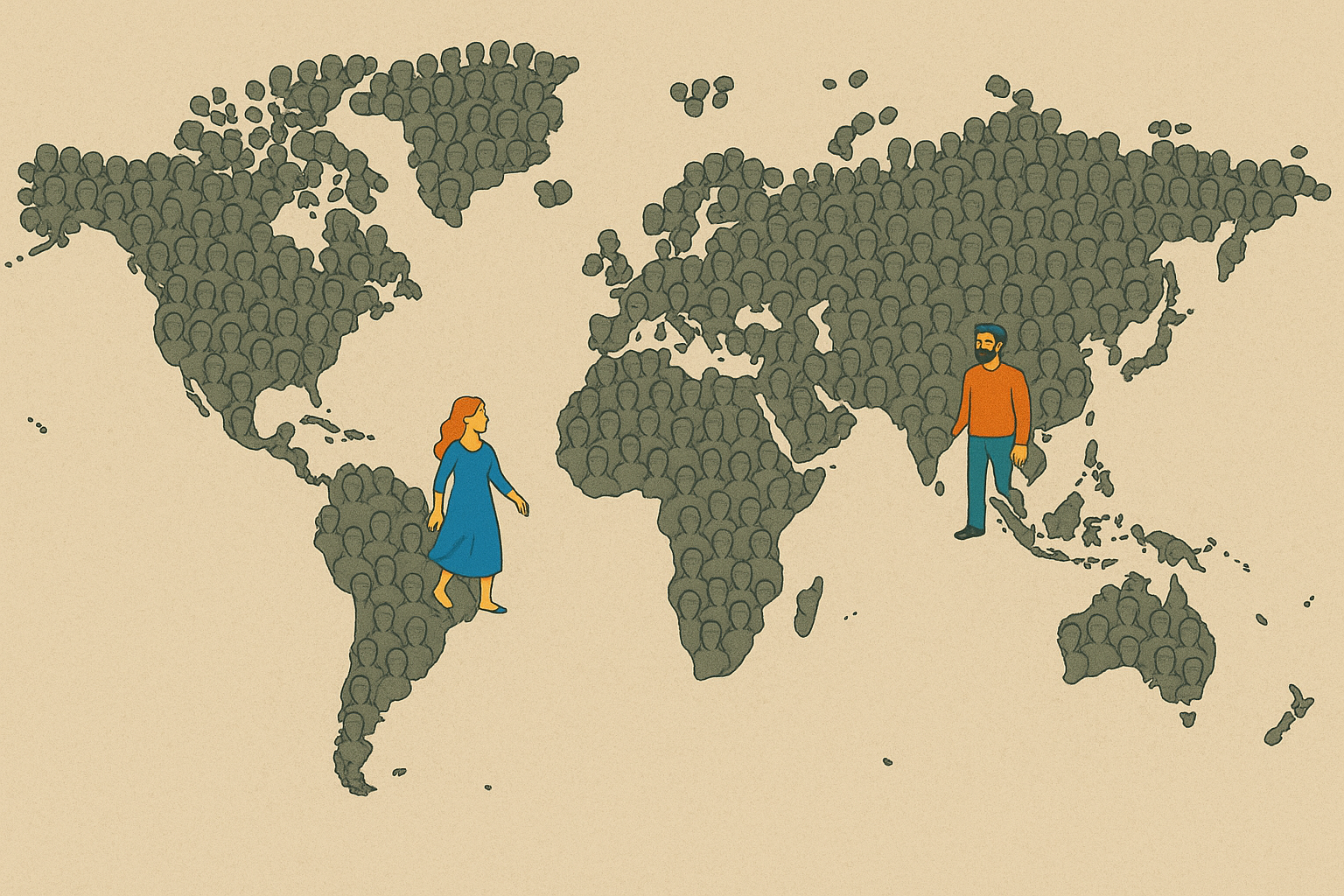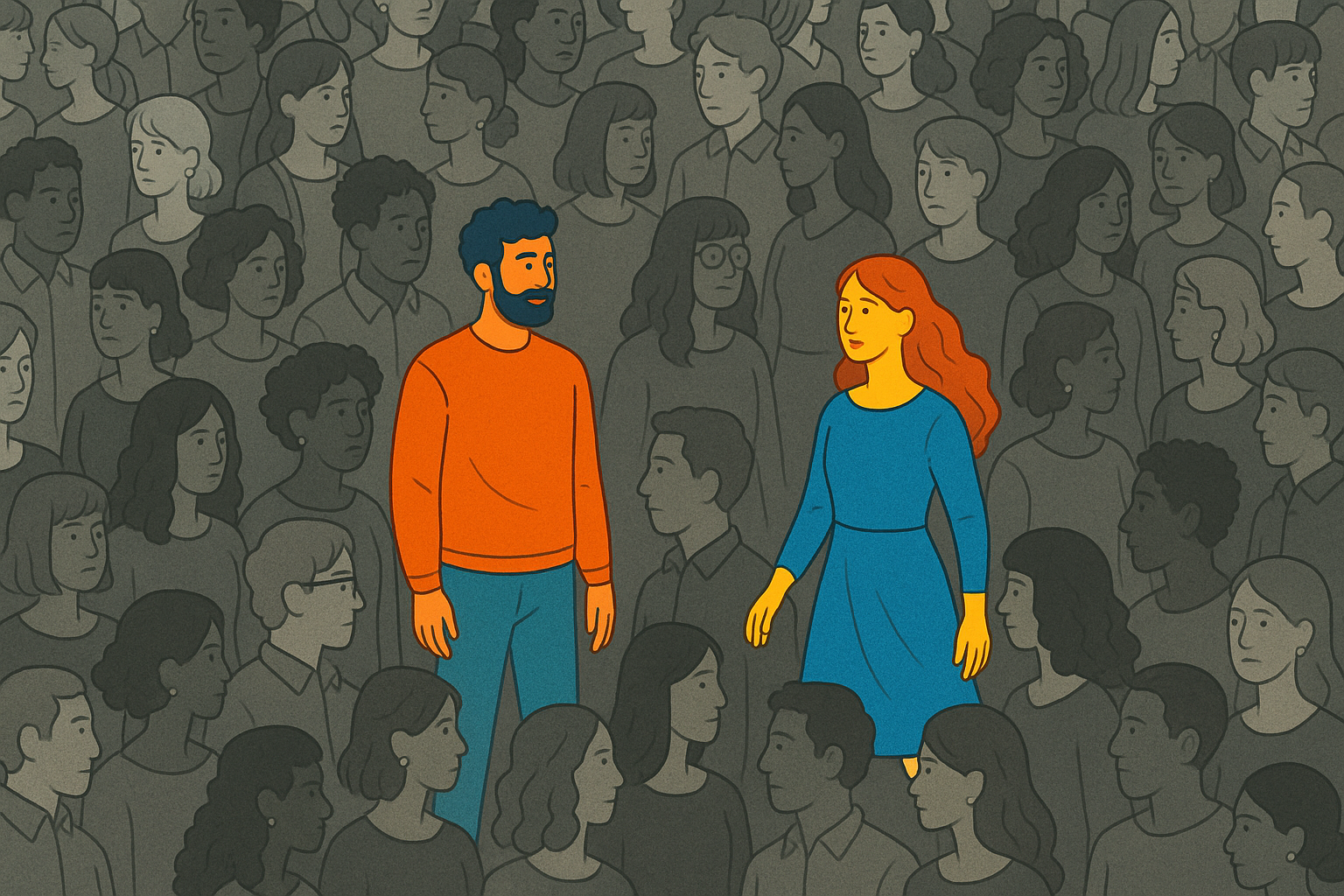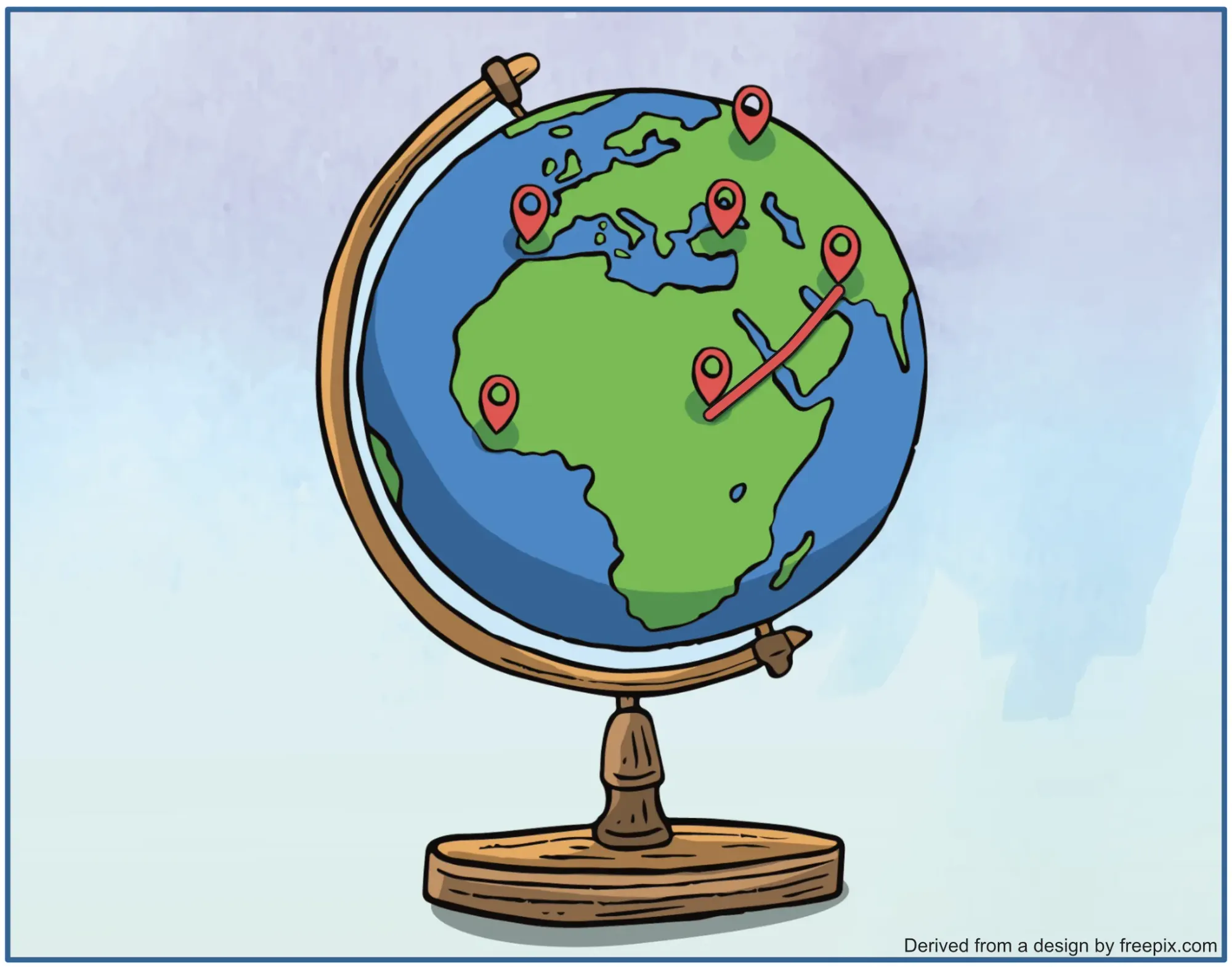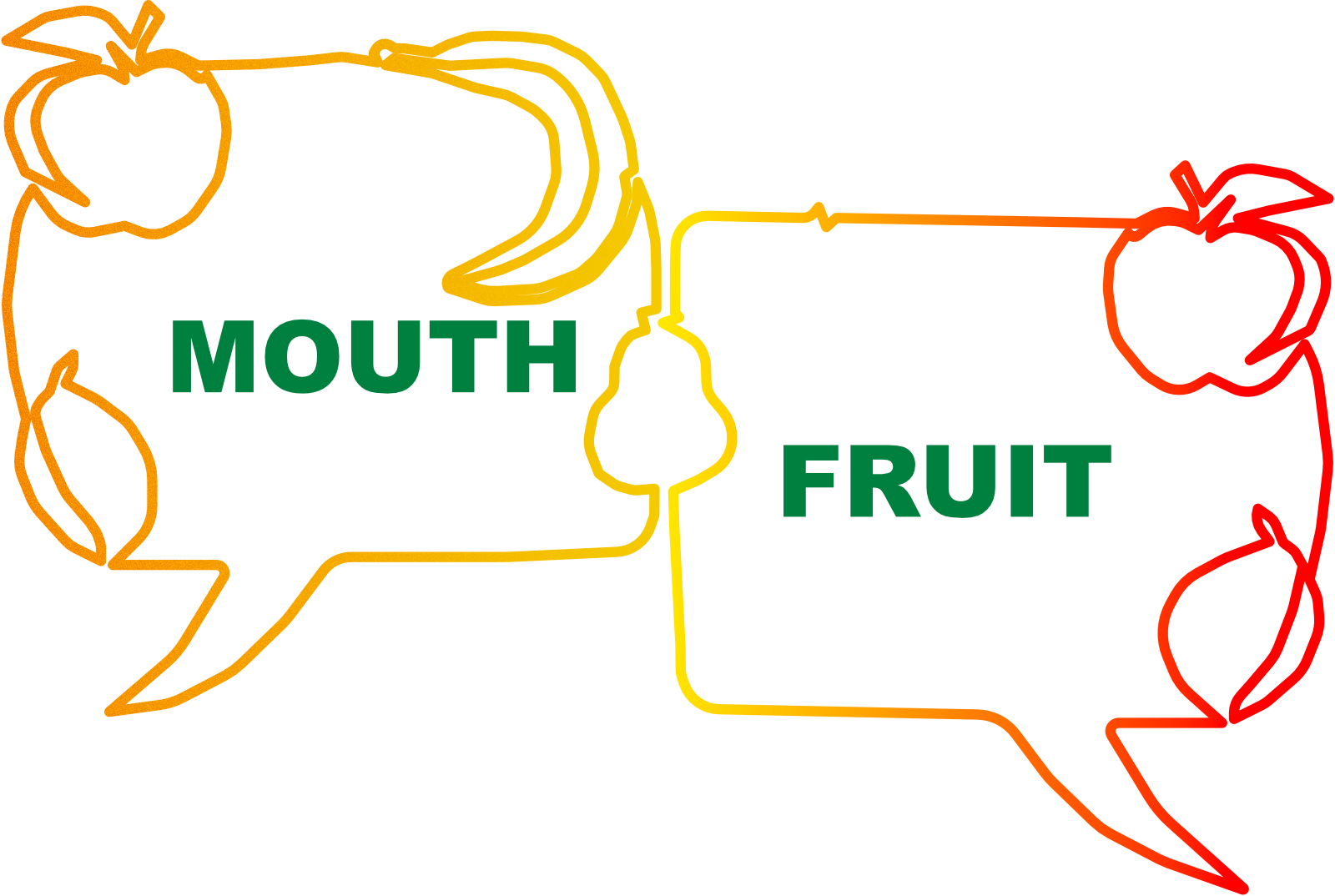Are we the same?

We are the same.
Perhaps you’re thinking, “Hey, wait, Mouth Fruit, didn’t you just say there is no common ground among us all?”
Hmm. Lemme think. In Global Common Ground, I did say that there is very little that we all agree on, if anything. Here, I am not talking about agreement, but rather attributes we have. Pick any two persons—yes any—and there will be attributes in common.
It might be, perhaps, that we have "little grey cells" and can communicate.

Beneath the variety of our manifestation everywhere, patterns of similarity span continents and cultures. These patterns appear in our physical forms, in systems of communication, and in ways of living together. We observe these similarities moving from our bodies to our languages to our cultures—especially in shared understandings of enjoyment and of right and wrong.
🧬 Biology
Bodies work in similar ways. Humans need food, water, and rest. A human heart beats, a human mind processes the world, a human body responds to pain and pleasure in predictable patterns. When one person cries, laughs, or feels pain, others recognize these experiences.
Most humans have two hands. Fewer can tie a knot. Most have two feet. Fewer can walk. Most have sex organs. Fewer can reproduce. Any pair shares many of these features.
👄 Language
The ways people communicate reveal shared experience. Complex systems of communication form in societies. People use words, expressions, and gestures to tell stories, express care, share knowledge, and build connections. Within each society, individuals share specific languages. Between societies, languages differ, yet two individuals from anywhere might share a language (some languages have spread far). Even when they don't, both use some form of language to communicate.
Languages themselves have much in common. Those common features become part of what persons have in common.
📆 Culture
Our social lives follow similar patterns. We form families and communities, create art and music. People tend to mark important moments with ceremony that holds deep meaning. These moments include birth, coming of age, marriage, naming, and death. Patterns emerge and arise across cultures because they reflect common human experiences and needs—both in what brings joy and in what maintains order.
The rules for living together show similar patterns...
🎉 Enjoyment
In enjoyment, we see how individuals connect. Within any community, people celebrate together. Between communities, two persons might honor birthdays differently, yet both honor them. They might enjoy different music, yet both find meaning in rhythm and song.
↕️ Norms
The rules created for living together show similar patterns. Every known society has emergent expectations about how people should treat each other—expectations for trade, for protecting children, for resolving disputes.
Communities develop their own notions of appropriate behavior. An individual learns what their communities consider right or wrong. Between communities, these specific rules might differ, yet common themes emerge.
Consider two persons from different places. They are very likely to agree that killing members of one's own group without cause is wrong. This agreement extends (though with lessening certainty) to incest between close family members, taking others' possessions, and betraying one's group. Ways of making and keeping agreements also show common patterns. They might disagree on what exactly constitutes these behaviors or what exceptions exist, yet share the underlying principles.
Beyond these prohibitions lie positive norms—behaviors that those within a community honor. Two individuals might agree on the importance of protecting children or caring for family, even if they practice these differently. They might share values about reciprocity (such as the Golden Rule), fair trade, loyalty, respect for elders, or truth-telling, though expressing these in distinct ways. Any pair of individuals likely shares at least one or two of these core values.
Any two will find much in common
Pick any two persons. They have much in common. Their different concepts and customs might hide this at first. Yet beneath confusion lie elements of sameness—some clear as physical traits, some less clear (subtle, abstract, less reaching) as shared values.

Let's make this personal
- You and I have attributes in common.
- Nia and I have some things in common, but maybe not the same things as you and I.
- You and Fritz have some things in common. And you might not even know him!
- Fritz and Nia have attributes in common.
Try this: Consider a specific person who is very far from you. No, not a politician or celebrity. If you don't know a person, a little search can find a description of some ordinary person, maybe a boy who saved a puppy, maybe a lady who made a long mural between two parts of her town. What do you two have in common? Two ears, maybe? Check! Tangled hair? Big smile? Often scared? Having a desire for that one simply-put good thing?

